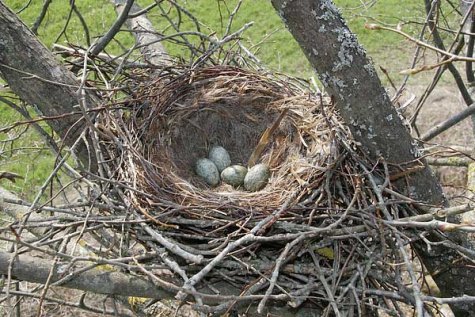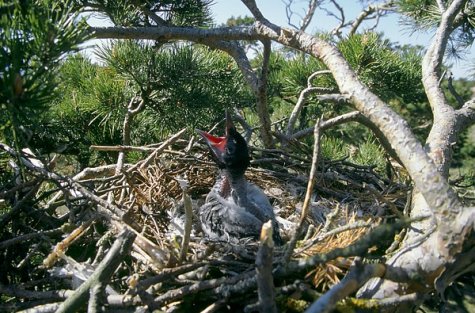Crow life
Photos: Urmas Sellis and Arne Ader
Translation: Liis
Hooded crow nest
Hooded crow Hallvares Corvus corone cornix
In winter hooded crows are several times more numerous in Estonia than during the nesting period – including the migrants from the north up to 300 000 individuals have wintered here in some years, but the nesters are only 40 000 - 70 000 pairs at most.
As usual they started to build nests (seldom repairing old nests) towards the end of April and this is rather noticeable in areas with trees in cities – a quite large structure of branches and dry sticks and basically chosen and established by the female between the branches of a higher tree. Already in early May a full clutch can be found: four to six greenish, densely brown-patterned eggs. Only the female incubates; she is fed during this period by the male. The incubation period lasts up to about twenty days and by now for a part of the crows the eggs have surely been hatched.
Both adults birds care diligently for the chicks. If the nesting for a pair nearby has been unsuccessful, a stepparent may even come in to help with feeding the young. The chicks fledge after five weeks but they are not left without parental care – they are taught ”crow manners”, kept in order and fed. It is quite interesting to study the family relations of the clever hooded crows in a July-time park.
Crow chick wants food










